Venice << VEHN ihs >>, Italy (pop. 254,661), is one of the world’s most famous and unusual cities. Venice lies on about 120 islands in the Adriatic Sea and has canals instead of streets. Its people use boats instead of automobiles, buses, taxis, and trucks. Venice also includes part of the Italian mainland.
Loading the player...Gondola in Venice
Fine architecture and priceless works of art have long helped make Venice a major tourist center. The city also ranks as one of Italy’s largest ports. Venice is the capital of Venetia (Veneto), one of the 20 political regions of Italy. The city’s name in Italian is Venezia.
Venice lies at the north end of the Adriatic Sea, 21/2 miles (4 kilometers) off the coast of Italy.
The city’s location on the Adriatic made it an important trading center as early as the A.D. 800’s. Venice became a strong sea power and gradually built a colonial empire that extended throughout much of the eastern Mediterranean area. At the height of its power, Venice was known as the “Queen of the Adriatic.”
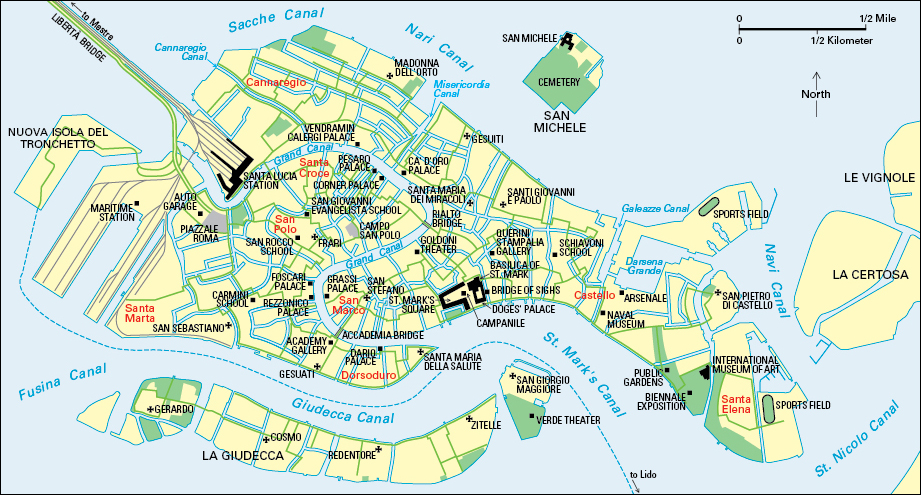
Through the centuries, Venice lost much of its economic and political strength. But the city’s art treasures helped it keep its place as a cultural center of the world. Today, floods and polluted air and water threaten to slowly destroy the city. People from many parts of the world have joined various campaigns to save Venice.
The city
forms a governmental unit of Italy called a commune. The islands of Venice make up the historic center of the city. The modern industrial centers of Marghera and Mestre on the mainland are part of the commune of Venice. See Italy (Local government).
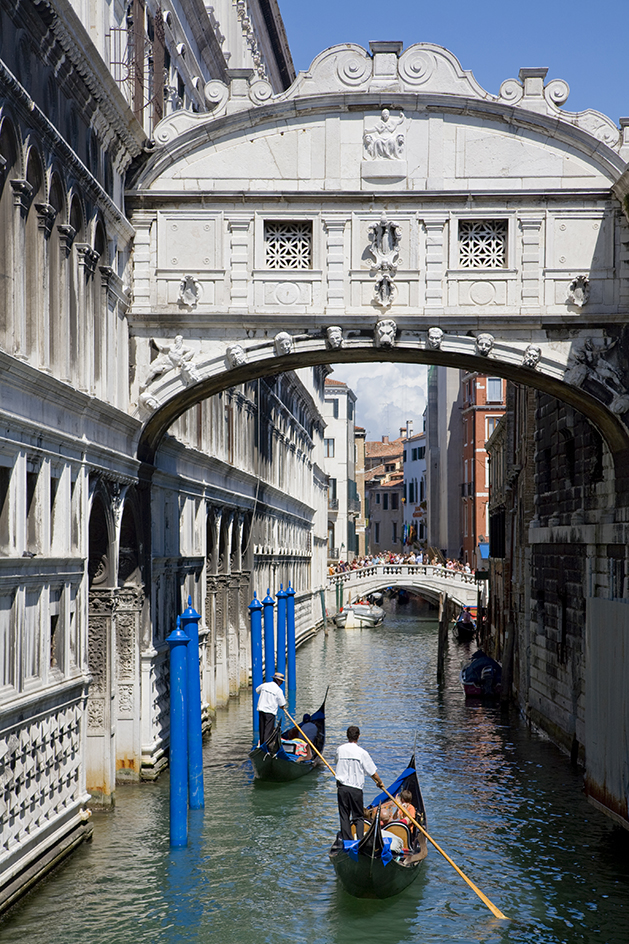
A lagoon separates the islands of Venice from the mainland. A roadway over the lagoon carries traffic between the mainland and two of the islands. Automobiles, buses, and trains use terminals on those islands. A light railway connecting the city center with two islands opened in 2010. More than 150 canals take the place of streets on all the islands of Venice, and boats provide transportation. Black, flat-bottomed boats called gondolas once served as the chief means of transportation on the islands. Today, motorboats have replaced most of the gondolas (see Gondola). More than 400 bridges cross the canals and link the main islands of Venice. Narrow alleyways called calli run between the buildings on the islands.
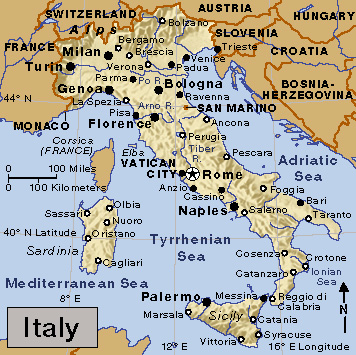
The Grand Canal, the city’s main canal, winds through the heart of Venice. Marble and stone palaces built between the 1100’s and 1800’s stand along both sides of the Grand Canal. The Rialto Bridge crosses the canal in the heart of the city. Venice’s chief shopping district lies along the Merceria, a narrow street that runs from the Rialto Bridge to Saint Mark’s Square.
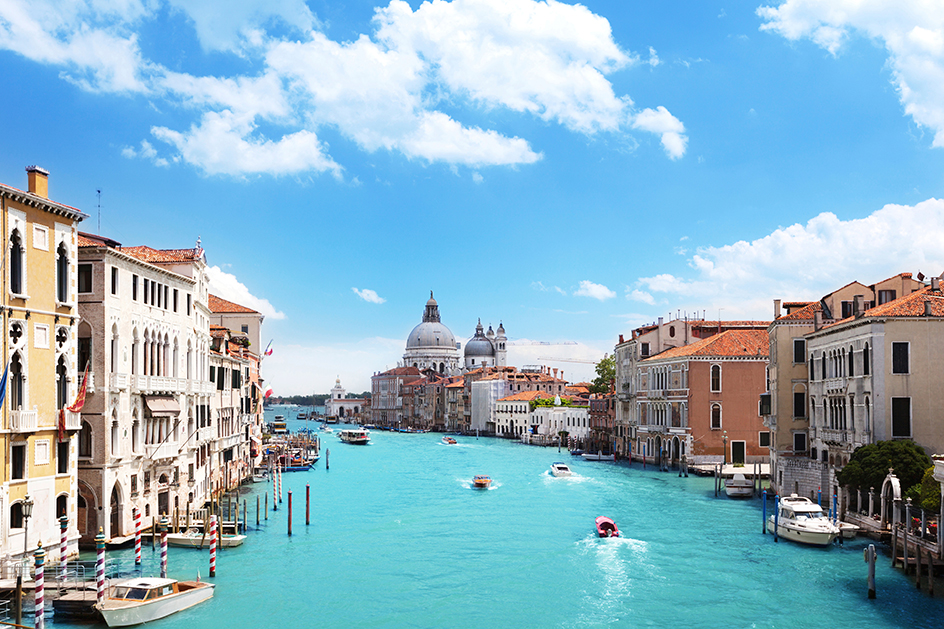
Saint Mark’s Square is the center of activity in Venice. The Basilica of Saint Mark, on the east side of the square, ranks as one of the world’s outstanding examples of Byzantine architecture (see Saint Mark, Basilica of). A bell tower called the Campanile stands nearby. Buildings in the Renaissance style of architecture rise along the other three sides of the square. Cafes in front of these buildings are favorite meeting places for tourists and for residents of the city. The Doges’ Palace, just off the square, was built as a residence for early Venetian rulers called doges (see Doge).
Priceless artworks may be seen in buildings throughout Venice. The Academy of Fine Arts has an outstanding collection of famous paintings, including works by such Venetian masters as Titian, Tintoretto, and Paolo Veronese. Hundreds of students attend Venice’s schools of architecture, art, and music. The University of Venice has about 15,000 students.
Venice has few parks or gardens. But the Lido, a narrow sandbar that borders the islands on the east, is one of Europe’s most popular beach resorts.
Venice’s location gives the city unique characteristics, but it has also caused serious problems. For example, during winter storms, floodwaters sweep through the islands, covering public squares and walkways and damaging buildings. The constant exposure to water is also weakening the foundations of Venice’s buildings. In addition, air pollution is eroding the buildings, as well as many of the city’s outdoor art treasures. The islands of Venice were sinking an average of about 1/5 inch (5 millimeters) yearly until the mid-1970’s. A number of scientists believe that the sinking resulted partly from the removal of underground water for use by industries. The Italian government restricted the use of water from the city’s underground wells. Water pressure then built up under the islands, and the city stopped sinking.
The people
of Venice’s islands are continually affected by the water that surrounds them. The water influences their food and housing as well as their transportation. For example, seafood is the main course of a typical Venetian lunch or dinner. Houses and other buildings do not stand on solid ground but on wooden piles (posts) driven into the mud.
Almost all Venetians are Roman Catholics. Several annual events, in addition to religious holidays, attract large crowds to the city. One of these events, the Feast of the Redeemer, commemorates the end of a plague that struck Venice in 1575. During this all-night festival in July, musicians perform in lighted boats along the canals. A regatta (gondola race) is held each September.
Since about 1950, thousands of Venetians have left the islands to live in the mainland communities of Marghera and Mestre. The majority of Venice’s people now live in Mestre. Many people have moved off the islands because the mainland offers greater job opportunities and a lower cost of living. The modern apartment buildings in Marghera and Mestre also attract many Venetians. Most of the buildings on the islands were erected hundreds of years ago, and there is no room to build new housing.
Economy.
Tourism is the chief economic activity of the islands of Venice. Each year, millions of tourists visit the historic center of the city. They make up an important market for goods produced by craftworkers who live on the various islands. The islands of Murano have won fame for fine crystal and glassware. Lace and embroidered work come from Burano.
The industrial and trade activities of Venice center in Marghera and Mestre. Factories in these communities produce aluminum, chemicals, coke, fertilizer, paint, petroleum products, steel, and other goods. Venice’s port facilities are centered at Marghera.
Industrial development in the mainland portion of Venice has created thousands of jobs for Venetians. But it has also been a major cause of the serious air and water pollution that threaten the city.
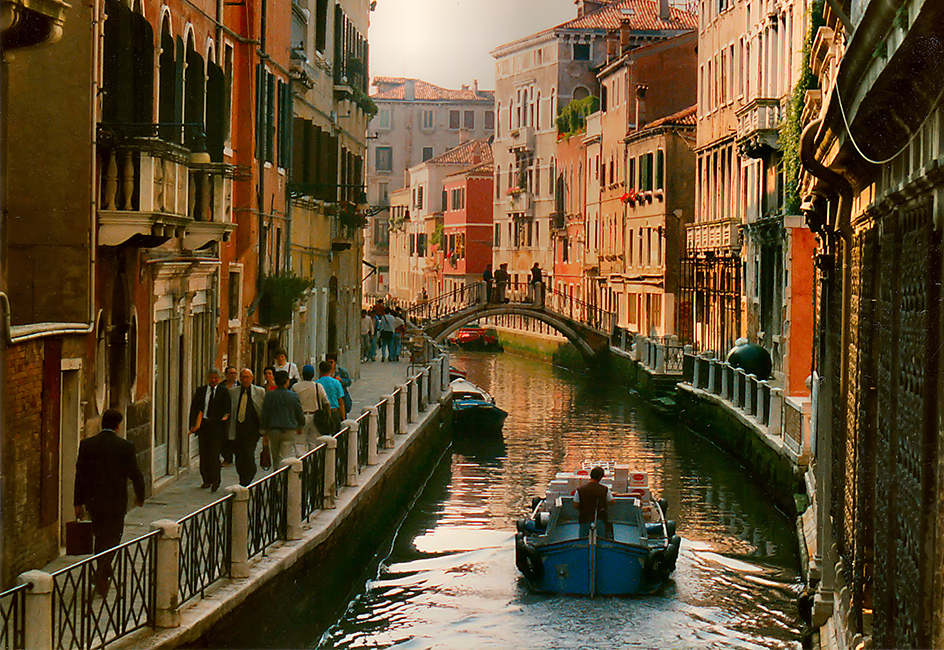
History.
The first settlers of Venice fled to the islands during the A.D. 400’s to escape Germanic peoples who were invading Italy from northern Europe. The early Venetian economy was based on fishing and trading. The Venetians traveled along the Adriatic coasts in search of new markets. By the 800’s, Venice was trading with Constantinople (now Istanbul) and cities on the Italian mainland and northern coast of Africa. Venice developed into a nearly independent city-state, ruled by nobles.
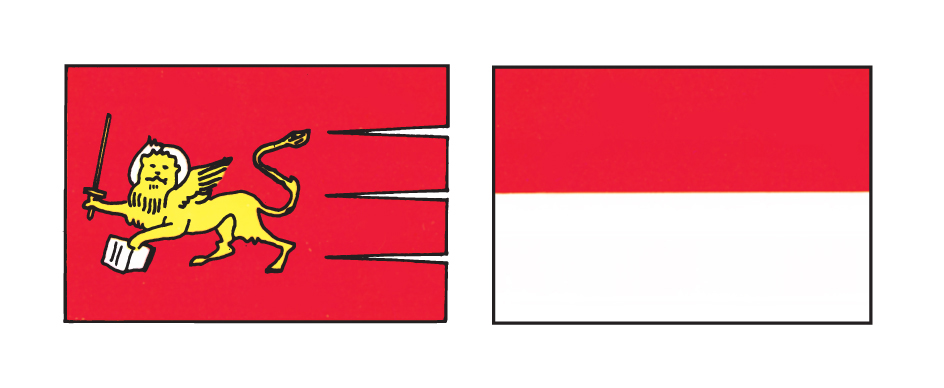
Venetian ships provided the transportation for the Fourth Crusade, which lasted from 1202 to 1204. The Venetians joined the crusaders in battle and conquered the Byzantine Empire, including Constantinople (see Crusades (The Fourth Crusade)). The growing strength of Venice led the city into a series of wars with Genoa, a rival sea power. Venice finally defeated Genoa in 1380 and gained control over trade in the eastern Mediterranean Sea. Venice became one of the largest cities in Europe. It reached the height of its power in the 1400’s, when its colonial empire included Crete, Cyprus, the Dalmatian coast (now part of Croatia), and part of northeastern Italy. Venetian ships carried almost all the silks, spices, and other luxury items that reached Europe from Asia. Venice became a leading center of Renaissance art in the late 1400’s and 1500’s (see Renaissance).
In the late 1400’s, Christopher Columbus journeyed to America and Vasco da Gama discovered a sea route to India. The center of trade in Europe then shifted to the Atlantic Ocean, and Venice’s power declined. The city gradually lost its eastern colonies to the Turks.
In 1797, French forces led by Napoleon Bonaparte occupied Venice. Napoleon divided what was left of the Venetian empire between France and Austria. The city itself came under Austrian control. In 1866, Venice became part of the independent Kingdom of Italy.
The industrialization of Marghera and Mestre began in the early 1900’s. During World War II (1939-1945), German troops took over the city. Allied planes bombed the port at Marghera but spared Venice’s islands.
In 1966, a disastrous flood that struck much of Italy caused millions of dollars in damage in Venice. The flood badly damaged or destroyed many of the city’s paintings and statues. International organizations and private citizens donated money to help the Italian government pay the repair costs. After the flood, government committees and private researchers began studies on pollution control. In the late 1980’s, the government approved billions of dollars for public-works projects to protect the city from flooding and from erosion caused by pollution. In the early 2020’s, a system of mechanical seawalls, used at times of dangerously high tides, began protecting Venice from floods.
